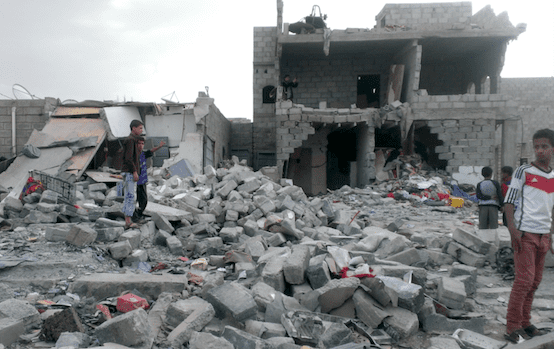233,000 Have Died in the War on Yemen

The U.N. Development Program (UNDP) has released a report on the effects of the war on Yemen, including the long-term effects on the country’s future development. This comes from the start of the report’s executive summary:
The ongoing conflict has further reduced the pace of development. The impacts of conflict in Yemen are devastating—with nearly a quarter of a million people killed directly by fighting and indirectly through lack of access to food, health services, and infrastructure. Of the dead, 60 per cent are children under the age of five [bold mine-DL]. The long-term impacts of conflict are vast and place it among the most destructive conflicts since the end of the Cold War [bold mine-DL]. The conflict has already set back human development by 21 years (Figure 1). If the conflict were to end in 2022, development would be set back 26 years—over one generation.
The report is the most comprehensive assessment yet of what the people of Yemen have endured over the last four years, and its findings are a damning indictment of the Saudi coalition intervention and our government’s support for their war. Beyond the estimated 233,000 deaths caused by the war (102,000 from fighting, 131,000 from hunger and disease), the war has set back the entire country by a generation. It will take decades for Yemen to recover, and that’s assuming that the war stops now. If the war continues for much longer, the loss of life will be even greater and the long-term damage will be almost unimaginable. According to the report, at least 140,000 victims of the war on Yemen have been children under the age of 5. They are among the most vulnerable, and they have borne the brunt of both mass starvation and the cholera epidemic. One Yemeni child dies approximately every twelve minutes.
If the war continues until 2022, the estimated death toll would be closer to half a million (482,000) with the vast majority of those deaths caused by lack of access to food and medical care. Of those 482,000, 316,000 are estimated to be children under the age of 5, or 65% of the total. The longer the war drags on, the more innocent civilian lives will be lost to preventable causes, and Yemeni children will continue to make up the bulk of the victims. Bear in mind that these are projections that assume reduced conflict intensity compared to last year, so the actual costs of prolonging the war could be much higher if the conflict escalates further.
Yemen was already a poor country before 2015, but the fighting and the Saudi coalition’s economic war have pushed it into the abyss. We have not begun to reckon with the full costs of the war on Yemen, and Americans have barely started to come to grips with how our government has enabled this horror to unfold for more than four years. By enabling and fueling this conflict from the start of the Saudi coalition intervention, the U.S. shares responsibility for the deaths of hundreds of thousands of Yemenis, and it is very likely that a large majority of those deaths wouldn’t have happened if not for that intervention and our government’s support for it. Outside intervention usually prolongs and intensifies conflicts, and this one certainly has.